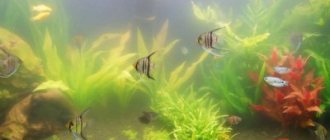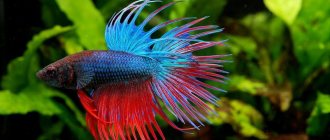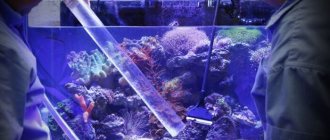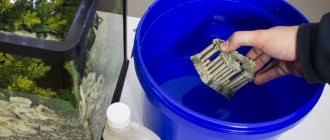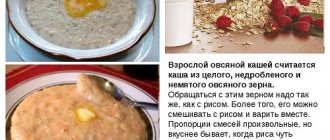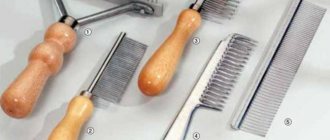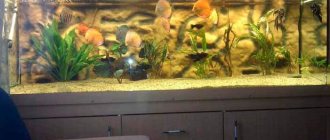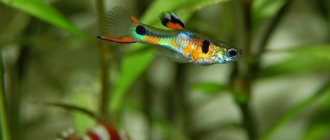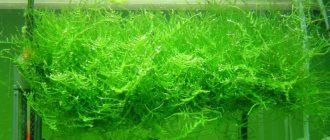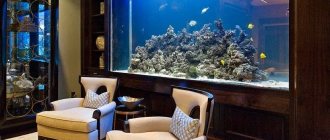Driftwood in an aquarium is beautiful, natural and fashionable. Say goodbye to plastic castles and sunken ships, the world of aquariums does not stand still and such things are already considered ugly and simply inappropriate. Driftwood, stones, bamboo, everything that can be found in nature in reservoirs, this is natural beauty. At the same time, finding, processing and making natural driftwood for an aquarium is not at all difficult. But you will be amazed at how natural it looks, and it will also be useful for keeping some fish. In this article, we will talk about the benefits of using driftwood in an aquarium and answer the most popular questions.
What types of fish require snags?
Of course, it will be more fun for any fish, and it will be more interesting for the owner to watch their pets if the driftwood becomes part of the interior of the aquarium. But there are certain types of fish that simply need snags.
Thus, various types of catfish use the plaque formed on the surface of driftwood as additional food, and the thinnest upper layers of wood as a source of dietary fiber. These are fish such as panak, Orinoco catfish, ancistrus catfish, and cuckoo catfish.
Many fish, which in natural conditions prefer to spawn in the roots of trees that have fallen into the water, or old snags, are happy to do the same in an artificial environment. This is a large group of fish of the perch family (gourami, glass perch).
Long and narrow fish of the order moray eels and eels will also be grateful to you for a labyrinth of roots or small spreading snags and for reliable shelter.
You should be especially careful when choosing the size of snags if you keep very active or aggressive fish (some types of cichlids, for example), since such pets prefer rocky, stone reservoirs and can harm themselves by injuring themselves during vigorous movement and fights on protruding edges.
How useful is such an accessory?
Underwater driftwood is modern, natural and attractive. Aquarium castles made of plastic, sunken boats, ships are already outdated and unacceptable in the modern aquaworld. Natural beauty is coming into fashion. Moreover, well-prepared driftwood is not just stylish, but also useful:
- the tree stimulates the normal ecosystem of the aquarium - it is an excellent base for the reproduction of favorable bacterial microflora;
- bacteria formed on wood are important for maintaining a healthy microclimate - they convert toxic compounds into safe decomposition products;
- underwater driftwood works to strengthen and improve the immune system of fish;
- wooden pieces submerged in water release tannin compounds, which form a slightly acidic environment, destructive for the proliferation of dangerous viruses and microbes;
- if the aquatic environment in the aquarium is alkaline, the underwater driftwood will adjust the pH level;
- driftwood creates natural shelters for aquarium inhabitants; they also use underwater pieces of wood as a spawning site;
- driftwood is especially necessary for aquariums where axolotls or ancitruses live; neotenic larvae and sticky catfish use it for food, scraping off the outer layers from it (this food additive stimulates the digestive system of aquatic inhabitants).
Withered foliage has the same abilities. The leaves are often introduced into the aquatic environment of the aquarium, creating conditions for the fish that are as close to natural as possible.
Where to get driftwood for an aquarium?
In the nearest forest or not far from your dacha you can find broken or fallen trees with their roots torn out. And in reservoirs there will probably be driftwood - a once drowned tree or bush. Using an ax or saw, separate the piece you like. It is not necessary to adjust it to the size of the aquarium on site. Doing this at home will be much more comfortable.
Moss decoration
An additional decoration in an aquarium with driftwood is moss. The result is a spectacular picture in the form of a real tree covered with moss. The main difficulty is to place the moss on the driftwood and secure it so that it looks natural, as if it is growing. For this, many people use a thin cotton thread. Over time, it disintegrates, but the moss manages to sprout outgrowths - rhizoids. The fishing line is more reliable, it is invisible in the water and holds the moss decoration well.
How to cook driftwood?
Preparing driftwood is a rather lengthy process.
- The selected tree is peeled and sanded so that no bark remains. If the wood is not hard enough, then it is calcined in the oven for 6-12 hours at 200+ degrees. This procedure will expel juices, esters and resins.
- Then the driftwood is soaked in full immersion for 2-3 weeks. If the water becomes colored, it should be changed.
- Next, the driftwood is boiled, immersing it entirely if possible. If this is not possible, then the tree is lowered first with one end into the container, then with the other. Fruit and coniferous trees are boiled in well-salted water. This procedure lasts about 6 hours.
- The next step is to soak the driftwood again for 2-3 weeks with frequent water changes.
Steps 3-4 are repeated until the tree stops releasing substances into the water and is completely submerged. In this way, a maximum of resins and esters are removed from the product, the wood loses its buoyancy and acquires very beautiful shades.
Completely porous and floating forms (for example, you are drowning aspen) must be drilled from below and several heavy bolts screwed into the tree. Or screw a piece of driftwood onto a plastic platform, for example from org. glass, and press the platform with stones.
If your driftwood has already been in an aquarium, but spent a long time on land, then it is enough to simply soak it for a few days so that all the air leaves the structure of the tree and it loses its buoyancy.
Well-prepared driftwood will serve you for 2 years or more, it all depends on the type of wood. You can decorate driftwood with moss, bucephalus, anubis and other plants that tend to grow to their base. Initially, the plants are secured with fishing line or even super glue.
Purpose and benefit to residents
Recreating natural beauty is not the only purpose for which driftwood is placed in an aquarium. Wood after full processing not only decorates the pond, but also supports the biotope. By immersing branches and roots in water, aquarists take care of the health of their pets.
Pros of having wood fragments inside the aquarium:
- water hardness decreases, acidity increases;
- increases the surface area where beneficial nitrifying bacteria multiply, which neutralize toxic ammonia;
- feeding for catfish is provided - surface fibers and mucous coating on the tree;
- the water is saturated with tannins, which slow down the development of microbes;
- Shelters are created in which fish play, rest, and hide during spawning.
The piece of wood can be placed in the foreground or hidden among the plants. Wood cuts and branches sometimes serve to support terraces. Moss is often laid out on the tops, which adds aesthetics and softness to the display.
On a note! Even after prolonged soaking, driftwood turns the water brownish. This should be taken into account when planning your aquarium design. If the style implies bluish, transparent water, you should abandon wood decor.
Place the driftwood in the aquarium
How to make a driftwood for an aquarium a real work of art? It is necessary to give preference to branchy or textured pieces of wood. If possible, put it in several different positions and see how it looks better. There is no single advice on how to place driftwood in an aquarium.
It happens that even a carefully boiled tree still floats. Most often, increased buoyancy is associated with the large size of driftwood for an aquarium. The easiest way to keep it in place is to tie it with fishing lines to two stones at the beginning and end. It’s better to dig it in on one side so that it doesn’t look artificially placed. Under no circumstances should the piece of driftwood rest against the glass at both ends, since, when it swells, it can squeeze out the wall. It is not recommended to use suction cups for this, as they quickly come off, and the floating snag can cause injury to the fish.
Main problems
- Raid. Plaque formation on fresh snags will not cause much harm. Catfish will happily eat it. If there are no catfish, then rinse the tree under running water. If plaque has formed on an old piece of driftwood, you must immediately get rid of it.
- Darkening of the water. This phenomenon means that the driftwood was not completely dried. It is necessary to remove it from the fish house and send it to dry.
- Darkening. Color loss is a natural process, so no special measures are required.
- Greening of driftwood. Green color means that the driftwood is covered with algae, just like stones and walls. To reverse the process, reduce the length of daylight hours and the amount of lighting, and remove the greenery from the tree.
You can decorate the snag with Javanese moss, which looks amazing on branchy snags. To secure it to a tree, you can use one of three methods:
- Wrap with thread;
- Secure with fishing line;
- Glue it with glue.
The first method is considered the most humane in relation to mosses and fish. Over time, the thread will rot, but the moss will already have time to attach to the tree. You can glue it if you are not afraid of water toxicity.
Common Questions
Finally, we decided to collect all the frequently asked questions regarding the design of an aquatic environment with driftwood. Knowing the answers to them will make the task easier and turn the decorating process into a fun and exciting experience.
The driftwood colors the water. What to do?
- In principle, there is no need to do anything, because this is a completely normal situation. The aquatic environment takes on a brownish color due to tannins released by submerged wood. A similar effect is observed when placing leaves in water. Tannins do not harm aquarium inhabitants; on the contrary, they improve the water.
- But, if you want to achieve perfect transparency, the water can be purified. For example, by adding activated carbon to the filter (not pharmacy, but specialized, the one offered in pet stores). Or change the water more often.
A whitish coating appeared on the snag. Is it dangerous?
- The culprit of this problem is poor-quality preliminary preparation of the tree. If a white coating appears on the tree, observe the behavior of the fish.
- If the habits of the aquarium world have not changed, there is no need to do anything - catfish successfully cope with the plaque. Otherwise, the decor will have to be removed and the water replaced.
My snag does not sink, but floats. What to do?
When a piece of driftwood stubbornly refuses to sink, this indicates the presence of oxygen in the wood. This happens when novice aquarists, after boiling a tree, take it out of the water and keep it in the air for a long time.
In this situation, the snag can be additionally secured with handy devices at the bottom of the container. Or take it out and repeat the boiling (soaking).
After placing the snag, the water began to smell of hydrogen sulfide. How to get rid of the smell?
This situation occurs due to the wood not being completely dried and indicates that the aquarium wood has begun to rot. The snag must be removed, allowed to dry completely, and then returned to its place.
Woody parts, beautiful dry shoots, branches - all this becomes an excellent raw material for the manufacture of decorative driftwood. Properly prepared and beautifully placed, such water accessories add aesthetics to the underwater world and give it originality.
Next
AquariumMicro and macro fertilizers: invisible assistants for aquascapers
Looking for a suitable tree
If desired, the aquarist can find a good and beautiful branch directly on the street or in the forest. Also, some valuable species are sold in pet stores (for example, mangrove). They are brought there from other countries, so the buyer will not be able to find an analogue on his own.
First, you should start with what cannot (!) be used for an aquarium:
- A tree that is already partially rotten or rotten inside;
- Young branches, only cut (that is, you cannot go out into the yard, cut down part of the tree and throw it into the aquarium). It is important that they dry completely, and this takes a lot of time;
- Rocks containing large amounts of resins. For example, these are coniferous trees (pine, spruce, fir, cedar, larch).
There are a lot of suitable trees. The ideal option is considered to be driftwood. That is, these are sunken branches that have lain at the bottom for quite a long time. For many aquarists, it is considered a real success if they find willow roots that have been in the river for a considerable period. They look interesting because they are tightly intertwined, but they sink easily and do not decompose easily.
You can search for driftwood directly in bodies of water, on the shore. But it is important that there is a flow there, and that the water itself is clean, not polluted by various enterprises. Otherwise, all sorts of dangerous substances will certainly be absorbed into the tree and then poison all the inhabitants of the aquarium. If there are no rivers nearby, then you can look in the nearest planting or private sector. Probably, a tree was in the way of someone in the yard; it was cut down and has been lying there for a long time.
As for the species, fruit or deciduous trees would be an excellent option. For example, these are apple, apricot, cherry, pear, walnut, beech, maple, ash, grape, acacia, etc.
How much are?
One of the fastest and easiest options for purchasing driftwood for a terrarium or aquarium is to buy it online or in a pet store. Its cost ranges from 700 to 2500 rubles, depending on the size and type of wood.
If you are interested in the topic of driftwood, then perhaps you are already using them or are just planning to do so. Share your experience or ask additional questions - it will be interesting!
